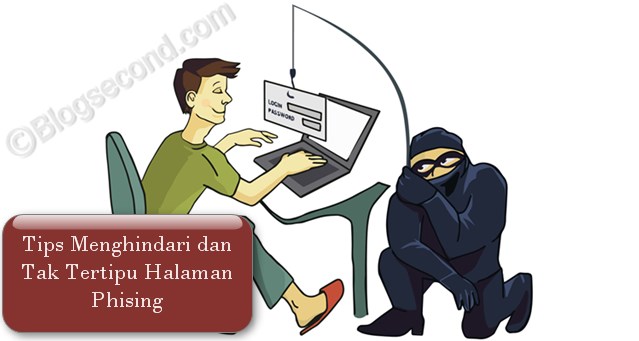Tips to avoid phishing sites and not to be fooled by phishing sites

Have users ever been fooled by a search engine site thinking it was just Google? Then it can happen that users forget not to see the logo above when in the search engine, and that is a carelessness or an unimportant feeling.
Actually, the search engine isn’t just Google, there are many other types like: Bing, Yahoo, Ask, Yandex, etc. Overall, it’s almost the same, but there are differences at the top and bottom that allow users to tell which search engine they are looking for.
Speaking of almost the same site, it’s like a fake page that is used for unconsciously retrieve user information data. Simply entering data incorrectly into a bogus website is very dangerous, you know, and usually the page is considered to be. designated Phishing.
Also Read: Tips To Protect Facebook Accounts From Hackers
What is phishing?
Is a page very similar to another website that has an element of data theft. At the moment, Facebook users are most fooled by this phishing technique. So you will be asked to enter a url and when they click the link they will be taken to a page where they will need to enter their Facebook credentials.
The intended page is very similar to the Facebook website and can be accessed from both PC and mobile devices as if there was no difference. Even after filling in the access data, you will be redirected to the actual Facebook page.
Common phishing modes for hackers
There are so many types of modes that are performed by people with ignorant hands. This person will do their best to obtain the user’s credentials. After that, the accounts received are sold or used to promote their products. In other words kidnapped. Here are some of the most commonly used modes.
Sharing fake links with the bells and whistles of downloading an app or tool is profitable.
Somebody tricked the user into opening the link and the page requires login first.
A link that goes to someone’s profile page, but there is a difference in the domain directing them to sign up.
Authentication system from untrustworthy websites.
Essentially, the hacker is just sticking to this link. And as long as the user does not enter the credentials of an account, everything is fine.
Tips for Avoiding Phishing Pages
Before we discuss this, these tips will be used not just for users who use Facebook accounts, but for all accounts on a website like Google, Twitter, etc. It is very important to read this for experience.
- Display the domain or URL in the address bar of the browser – This is very important above all. The smallest difference in the domain link must be taken into account. For example, let’s say there is a very obvious Facebook address Facebook.com but on the currently blocked page it is facebook.com then it is very certain that it is phishing.
- Keep antivirus – Most virus blocking programs now come with tools to detect fake websites. Unfortunately, not all pages can be saved, and only popular pages. That’s why I didn’t do this method first.
- Ensuring trusted authentication provider sites – An example is an amateur site that shares a function in it and the user has to log in with a special account. For example, a Google account.
Usually the authentication process performed on the popup is too difficult to tell whether it is a jump to a real site or a phishing page. Hence, it is better for users to see before trying the website review first on google how many members have joined the site.
- Don’t trust fake event provider sites – Well, this is mostly experienced by gamers. Because there are now many phishing sites on the pretext of giving away gifts in the form of diamonds, gemstones or other things and the worst thing is that the site looks very similar.
Small if it is, but it was very helpful in preventing phishing sites from fooling users. As technology advances these days, many smarter things are created by hackers, and as normal people we can only avoid them.
diploma
Previously, phishing sites that asked for login information could be identified by entering incorrect data in the column. But in the meantime it has developed well, for example, to check the correct format of the e-mail address and if you enter it incorrectly, it seems to be a reality.
Last time I came across a very clever phishing page for Facebook. So when I press the url it becomes the authentication section (approval) It is only applicable that the name has irregularities and the profile picture is not displayed at the top.
Also Read: This is the Most Powerful Antivirus for Android Phones
From then on, I thought it was a temporary bug in the connection, but apparently the phishing site did this in a way that people can believe the connection is too slow and the profile photo is not showing up. Well after I hit the button, approve the application. Then the login column appears and it has been proven that it is phishing.
As long as users follow the tips above, nothing strange is definitely going to happen to their accounts on the internet.
Hopefully useful and good luck